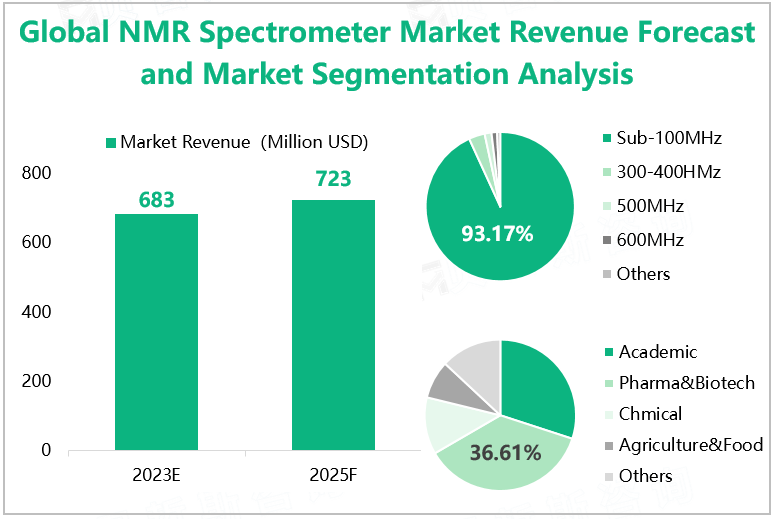A nuclear magnetic resonance (NMR) spectrometer is an instrument that uses nuclear magnetic resonance technology to analyze the structure of substances. It obtains the molecular structure and chemical bond information of the sample by placing it in a strong magnetic field, using radio frequency pulses to excite the hydrogen nuclei in the sample, and then measuring their relaxation time and frequency when returning to the ground state.
An NMR spectrometer is a powerful analytical tool that is of great significance for research and applications in various scientific fields. In the field of chemistry, nuclear magnetic resonance spectroscopy can be used to determine the structure of molecules and chemical reaction mechanisms; In the field of biology, it can be used to study the structure and function of proteins; In the field of medicine, it can be used to diagnose diseases and monitor treatment processes; In the field of earth science, it can be used to study rocks and minerals in the Earth's crust.
According to our research data, the total revenue of the global NMR spectrometer market is expected to reach $683 million in 2023 and may continue to increase to $723 million by 2025. Based on the differences in resonance frequencies, the main products in the current NMR spectrometer market include Sub-100MHz, 300-400MHz, 500MHz, and 600MHz. Among them, the sub-100MHz NMR spectrometer market segment dominates, and its market revenue share is expected to reach 93.17% in 2023. From the perspective of downstream application patterns, the pharmaceutical and biotechnology field is the largest downstream application market. According to our data, the global market revenue share of nuclear magnetic resonance spectrometers in the pharmaceutical and biotechnology field is estimated to reach 36.61% in 2023.
Global NMR Spectrometer Market Revenue Forecast and Market Segmentation Analysis

Source: www.globalmarketmonitor.com
From the perspective of market competition, the concentration of the global NMR spectrometer market is relatively high. Large international brand manufacturers such as Bruker and Oxford Instruments dominate the market. These manufacturers have strong technical strength, big brand influence, and complete product lines, occupying a large market share. Data shows that the industry's top 3 enterprises' market revenue for NMR spectrometers reached a total of $346 million in 2020, with a total share of 53.89%. The top 3 companies were Bruker, Oxford Instruments, and JEOL. In 2020, their market revenue of NMR spectrometers accounted for 30.76%, 166.91%, and 6.22% of the global market, respectively.
Global NMR Spectrometer Market Revenue and Share by Enterprise in 2020
|
Enterprises
|
Market Revenue (Million USD)
|
Market Share
|
|
Bruker
|
171
|
30.76%
|
|
Oxford Indtruments
|
94
|
16.91%
|
|
JEOL
|
81
|
6.22%
|
|
Top3
|
346
|
53.89%
|
Source: www.globalmarketmonitor.com
In the future, the NMR
spectrometer market will continue to maintain a stable growth trend. On
the one hand, with the rapid development of life sciences, materials science,
and other fields, the demand for NMR spectrometers will continue to increase.
On the other hand, the technological level of NMR spectrometers will continue
to improve, especially with rapid development in fields such as high field
strength, superconductivity, and pulse Fourier transform. The advancement of
technology has improved the performance and accuracy of instruments, and will
also broaden the application fields of NMR spectrometers.
For more information, please click: 《China NMR Spectrometer Industry Market Research Report 2023-2029》.
